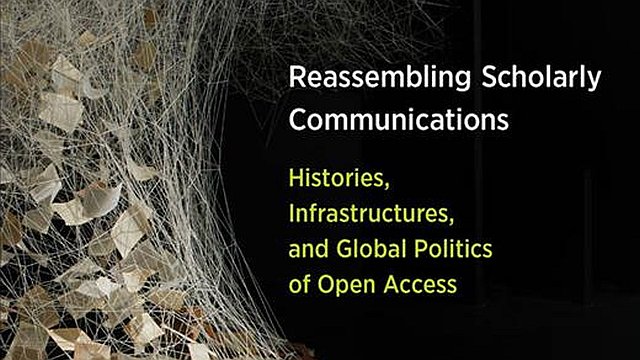
How the scientific attention economy is being impacted by growth of the scientific system
The rate of scientific production has exhibited persistent growth over the last century, and this has significant implications for how academic knowledge is connected, accessed and evaluated. The recent proliferation of new rapid-publication online-only “mega-journals” has further tipped the balance towards production over consumption of new research, making understanding these implications a relevant and pressing issue.
To gain an insight into the ‘attention economy’ in science, a recent study1 analyzed a citation network comprised of 837 million references produced by 32.6 million publications over the period 1965–2012.
The results show how growth in the number of new publications (nodes) and outgoing references (links), combined with a diverse distribution of reference distance, give way to the “crowding-out” of prior literature. In particular, this process compounds the natural obsolescence of knowledge, and may negatively impact the efficiency of search processes across the knowledge network and the efficiency of scientific progress on the knowledge frontier. The ability of would-be knowledge seekers to explore the more distant corners of the knowledge network is significantly reduced. So it is important to quantify and understand the trends in scientific attention in order to avoid, among other innovation inefficiencies, the syndrome of ‘reinventing the wheel’.
One explanation for these findings is the narrowing attention by scientific agents contributing to the knowledge frontier. This narrowing breadth and depth may be the result of various factors. First, in some areas, scientific training may be increasingly focused on specialization during the doctoral training period, often to prepare for careers in large laboratory environments, together marking the end of the solo “renaissance” genius era and the steady emergence of the team science era. Second, the deluge of new literature may push researchers to the limits of their individual cognitive abilities to browse and fully digest new information. Whether scientific exploration occurs by jumping between reference lists or by using search engines, the channels to distant literature become increasingly narrow relative to the channels to more contemporary literature. Third, an increasing focus on production over consumption also means that researchers will spend more time writing and reviewing and less time reading and digesting the literature in the first place. Lastly, there may be narrowing scope due to the focusing power of circles of social influence which may affect the publication and referencing process.
Very classic and very recent literature cited increasingly less
The results show how growth relates to ‘citation inflation’, increased connectivity in the citation network resulting from decreased levels of uncitedness, and a narrowing range of attention – as both very classic and very recent literature are being cited increasingly less.
Unexpectedly, the largest decline in attention was to the most recent literature, that is, to articles less than 6 years old. One possible explanation is that researchers are not able to consume nearly as fast as they produce. Instead of reading every new publication, researchers may increasingly depend on individual heuristics to determine an article’s relevance and authority. Individual assessment is complemented by the “wisdom of the crowd” to collectively crowdsource the quality of research – that is, as proxied by citation counts – which is a collective evaluation process that can take several years to accumulate, thereby slowing down the “digestion rate” of academic literature.
In conclusion, the analysis demonstrates various ways in which the growth of the scientific endeavor impacts the structure of the science citation network. Because collective attention translates into long-term memory formation, it is important to understand the mechanisms underlying the attention economy in science. And more broadly speaking, an increasingly relevant question is how individuals, organizations, and societies will find the right balance between breadth and depth of historical, cultural, and technical knowledge in the age of information overload.
Article source: The memory of science: Inflation, myopia, and the knowledge network is licenced under CC BY 4.0.
Reference:
- Pan, R. K., Petersen, A. M., Pammolli, F., & Fortunato, S. (2018). The memory of science: Inflation, myopia, and the knowledge network. Journal of Informetrics, 12(3), 656-678. ↩
Also published on Medium.






